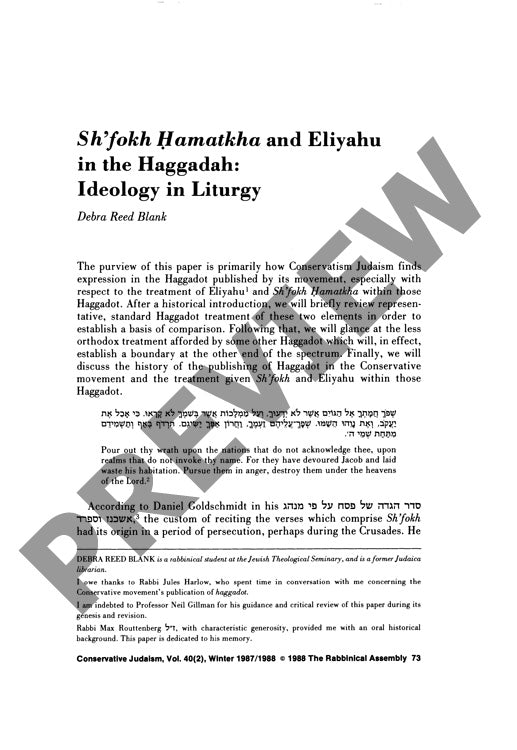Shfokh Hamatkha and Eliyahu in the Hagga
Couldn't load pickup availability
When Jews open their doors during the Passover seder to welcome the prophet Elijah, they confront an ancient tension between hope and vengeance embedded in two contentious liturgical elements: the vindictive prayer Shfokh Hamatkha ("Pour out Your wrath") and the messianic figure of Eliyahu. Through comparative analysis of Orthodox, Reform, Reconstructionist, and Conservative Haggadot, this research reveals how different Jewish movements navigate these medieval texts born of persecution to express their core ideological commitments. While Orthodox Haggadot preserve Shfokh Hamatkha with minimal explanation and downplay Eliyahu references, Reform publications initially excised the vengeful passage before gradually reintroducing modified versions alongside universalized interpretations. Conservative Judaism's distinctive approach emerges in its delayed entry into Haggadah publishing until 1979, reflecting deeper movement tensions. Conservative Haggadot maintain the traditional texts while providing extensive apologetic commentary to reconcile ancient liturgy with modern ethics. This pattern of preservation coupled with reinterpretation exemplifies Conservative Judaism's fundamental struggle to balance textual authenticity with contemporary values - producing works that neither fully embrace traditional perspectives nor entirely abandon challenging passages. The research demonstrates how seemingly simple liturgical choices serve as powerful expressions of denominational ideology and identity.

More Information
-
Physical Description
-
Publication Information
Published 1987-1988
ISBN
-
Publication Credits
Debra Blank

